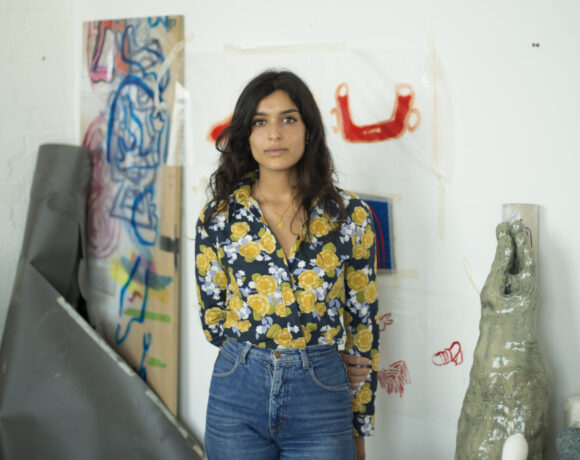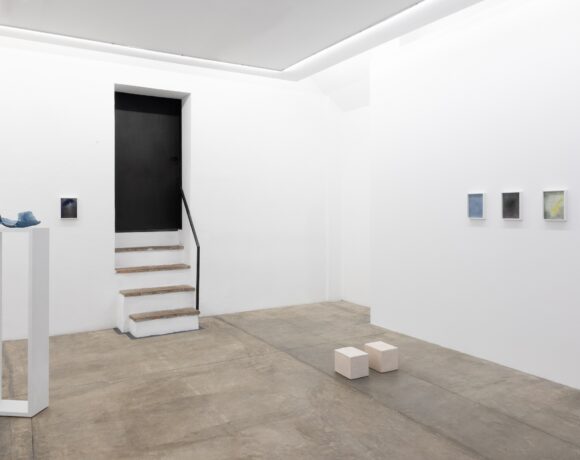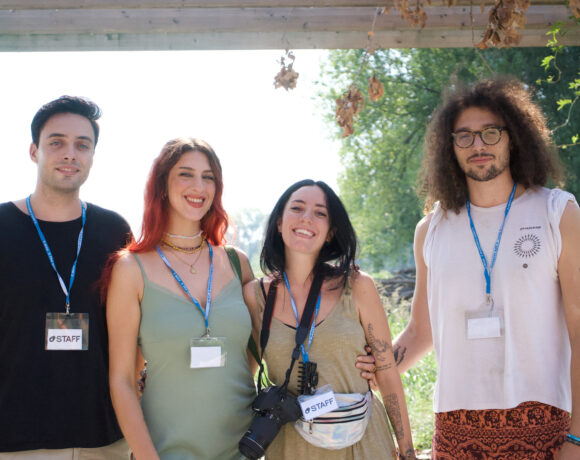Naturalia et Artificialia, exhibition curated by Dimora Artica in Ca’ Marsala, wonderful apartment located in the city centre of Bologna, is thought as an occasion to reflect on the relation between private spaces and artistic productions, between creative piece and natural forms, between what is ordinary and what is, instead, surprising. Part of Bologna’s Design Week, this exhibition is a visionary space in which Dimora Artica collects eleven art installations, deeply different in formal choices and art implications, created by five young italian artists, and shown all together in a fascinating wunderkammer.
Invented during the Renaissance, the wunderkammer is a private place collecting strange objects, different in origins and type, a peculiar and unique “theatre” in which the collector show his art taste in order to stimulate his guests’ curiosity.
This is the real meaning of the art exhibition Naturalia et Artificialia that creates his private space and his personal theatre in which the viewer can see eleven objects that, through the artist gesture on the “nature”, recreate the world.
The “surprising” effect, part of the wunderkammer concept, is here a bridge between personal space and the small words generated by every installations, eleven places to explore while visiting the house located in via Marsala.
Diego Soldà’s Rotolo n. 7 and Fuori campo are unexpected places that remind natural forms taken from a reality surprisingly reinvented by the artist. Both the installations are the result of a strong accumulation of colors, balance between similar gestures and case unpredictability. With the link given by the artist will that generates in the viewer mind the impression of looking to an artificial object in which there are some correspondences belonging to nature (the colored part of Rotolo n. 7, for example, appears deeply connected to the section of a tree).
In Giovanni De Francesco’s Inseparabili (inseparable in italian), two works made by three different elements (ceramics, concrete and coral), the relation between natural and artificial is clear, emerging by looking at the mix of the materials used, connected by the artist gesture. The same idea is generated by Daniele Carpi’s sculptures in which rocks (natural elements) find their “anthropomorphic” identity thanks to the adding of quartz and painted colors. Daniele Carpi’s sculptures refer to Homer’s Polyphemus but also to rocks landscapes in which the surprising element is the color use.
More referred to the concepts of paradox and artificial are Andrea Martinucci’s installations that reveal their complex identity, more virtual then real, by reading their title: 28012018.jpeg e 24042018.jpeg are two files names but also dates of realization. They indicate Time, obviously, but also the artist aim to build new meanings generates by a mix of different images and artificial materials (plastic and neon).
In the middle between human nature and paradox are Francesco Pacelli’s ceramics sculptures, visually unsettling and conceptually powerful: a skull, a memento mori with three eyballs, and two feet with a unique big toe that eternally links them. Two hallucinations that overthrow the natural order by using the artificial idea of the artist dream/nightmare.
Nature and artifice (it’s not a case that it’s the exhibition title) belong to “the same creative idea that generates a changing reality, different and with a meaning that has to be constantly built”. In this setting, “the artists works take their space in the domestic area by opening metaphorical windows to other worlds that need to be known”.
Info:
Info:
Naturalia et Artificialia
curated by Dimora Artica
September 25-29 2018
Ca’ Marsala
via Marsala 34
invitation only
 Giovanni De Francesco, Inseparabili, 2017, cemento, ceramica, corallo
Giovanni De Francesco, Inseparabili, 2017, cemento, ceramica, corallo
 Daniele Carpi, Nehmen #5, 2017, poliuretano, pietra, pittura a olio, acrilico
Daniele Carpi, Nehmen #5, 2017, poliuretano, pietra, pittura a olio, acrilico
 Francesco Pacelli, I have ogten the impression that distraction is the best way to escape, 2018, ceramica smaltata e porcellana, acrilico, resina, legno
Francesco Pacelli, I have ogten the impression that distraction is the best way to escape, 2018, ceramica smaltata e porcellana, acrilico, resina, legno
 Diego Soldà, Rotolo n7, 2016, tempera a strati su perno in acciaio
Diego Soldà, Rotolo n7, 2016, tempera a strati su perno in acciaio







NO COMMENT